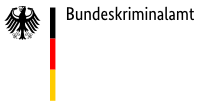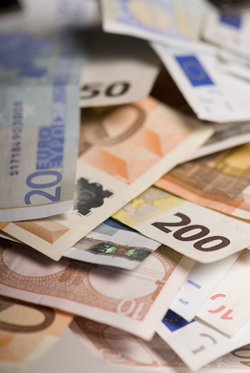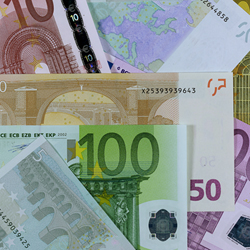- Why is it important to protect money against counterfeiting?
- Genuine or counterfeit?
- How do I recognise counterfeit currency?
- How should I react if I have received counterfeit currency?
- Where can I obtain detailed information on the subjects of cash and counterfeit currency?
Why is it important to protect money against counterfeiting?
Counterfeit currency crime is in itself almost as old as money. Thus, the history of money is at the same time the saga of untold attempts to forge payment instruments.
The significance of cash is not just confined to its role as a value medium in monetary transactions. Banknotes and coins have evolved over the years to reflect the economic strength, political cohesion and the cultural or religious orientation of a state.
Accordingly, it is understandable that the fight against currency counterfeiting is not only about the actual protection of money against counterfeiting but, to a large extent, the protection of confidence in the safety of the currency and the values associated with money as a payment instrument.
The great need to protect these legal interests has at all times been reflected in the fact that in all countries of the world currency counterfeiting has been ranked highly in the area of crime classification. The production and circulation of counterfeit currency is actionable throughout the world – where all currencies are concerned and regardless of the site of the crime.
In Germany, the fight against the "internationally organised production and circulation of counterfeit currency that requires investigations abroad" falls within the original law enforcement jurisdiction of the Bundeskriminalamt (§ 4 (1) 1. BKA Law).
Genuine or counterfeit?
Some counterfeits are not immediately recognisable as such at first glance! This is partly because the quality of security features reproduced by the counterfeiters, such as holograms, watermarks and micro printing, could lead to them being mistaken for the genuine product.
However, the counterfeiters do not have the means at their disposal for the production of supposedly "genuine" money, i.e. original banknote paper, special ink and banknote printing machines. For this reason, counterfeits cannot come up to the quality of the original!
In addition, the counterfeiter generally does not attempt to reproduce a perfect imitation of the genuine currency when he forges all the security features. In keeping with a "cost-benefit principle", he basically only invests as much time and effort as he considers necessary in order to be able to circulate the counterfeit in question.
By paying due attention and examining several security features, most counterfeit banknotes can also be recognised by the layperson.
How do I recognise counterfeit currency?
Cash currency is outfitted with a large number of verifiable authenticity features.
Careful examination of multiple security features by the persons involved in the monetary transactions is the most effective protection against the receipt of counterfeit currency.
The current counterfeits vary when it comes to quality and the reproduction of the security features. For this reason, it is important that:
Anybody wishing to recognise counterfeit currency has to know the genuine product!
- Commit the banknotes and their security features to memory.
- Do not allow yourself to be deceived by the seemingly genuine appearance, instead focus your attention to the security features.
- When receiving money, take the time to subject it to ample scrutiny.
- Don’t just check one security feature but always multiple features.
- A particularly suitable way of performing the authenticity check is to compare a banknote where it is absolutely certain that it is genuine with a banknote that is suspected of being a counterfeit.
- You can use additional aids such as a magnifying glass or ultraviolet light for the authenticity check.
- In case of doubt, have the cash checked by the nearest credit institute or a branch of the Deutsche Bundesbank.
How should I react if I have received counterfeit currency?
Whoever accepts counterfeit currency and realises this too late suffers a loss for a number of reasons: He/she does not receive compensation and whoever intentionally passes on counterfeit currency makes himself/herself liable to prosecution!
For your protection and in order to make it more difficult for counterfeiters to circulate counterfeit banknotes, the Bundeskriminalamt advises you to take the following steps:
- In the case of suspected counterfeit currency, inform the police immediately.
- Do not return the counterfeit currency to the circulator and on no account pass it on to others. If you do this, you can make yourself liable to prosecution!
- Try to detain the circulator of the counterfeit currency until the police arrive. If you do not succeed in doing this, commit his/her appearance to memory. If a vehicle is used, make a note of the registration number.
- Place the counterfeit currency in an envelope. Fingerprints are important traces!
- Hand the counterfeit currency over to the police and provide relevant information.
In principle, however, the following applies:
Do not undertake anything that would endanger yourself or others!
Where can I obtain detailed information on the subjects of cash and counterfeit currency?
Useful information concerning authenticity checks for EURO cash can, in particular, be obtained from branch offices of the Deutsche Bundesbank and the criminal police advisory services.
Amongst others, the following web sites provide you with further tips on how to protect yourself against counterfeit currency, information on the security features of the EURO and details relating to EURO cash:
- the Police Crime Prevention Programme of the Federal States and Federation
https://www.polizei-beratung.de/themen-und-tipps/betrug/falschgeld.html - the Deutsche Bundesbank
http://www.bundesbank.de/Navigation/DE/Aufgaben/Bargeld/bargeld.html - the European Central Bank
https://www.ecb.int/euro/html/index.de.html the European Anti-Fraud Office (OLAF)
http://ec.europa.eu/anti_fraud/pages_euro/index_de.html


